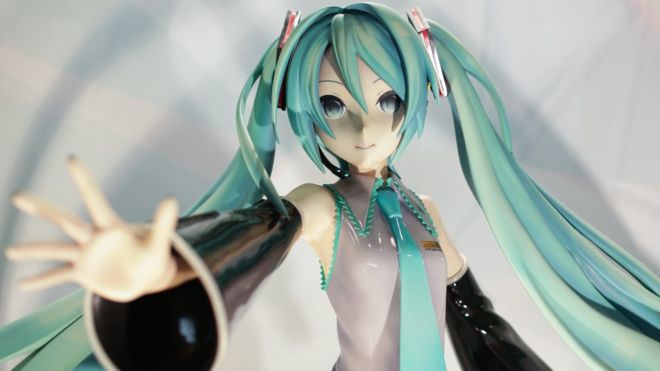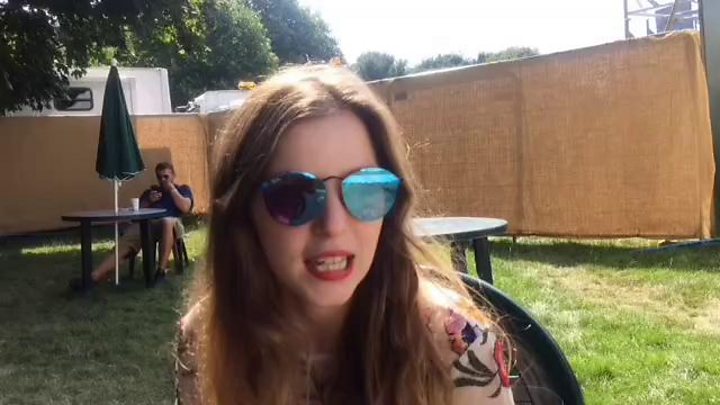Five visions for the future of music
By Paul Glynn
Welcome to the (not so) distant future.
The year is 2018. Music is changing fast, but can the humans keep up? Here’s a handful of possible outcomes. Go boldly everybody.
1) Your favourite singer is not real
One of Japan’s biggest pop stars Hatsune Miku (above) is not a real person.
But that small detail didn’t prevent the humanoid singer from releasing another new music video last week.
It won’t prevent her from lining up some duets in the future – given that she’s already collaborated with Pharrell.
If the name of the fictional J-pop act is unfamiliar, then try this one on for size:
Roy Orbison. The Big O died in 1988 but now his 3D hologram world tour will come to life, alongside the Royal Philharmonic Orchestra, on 8 April in Cardiff.
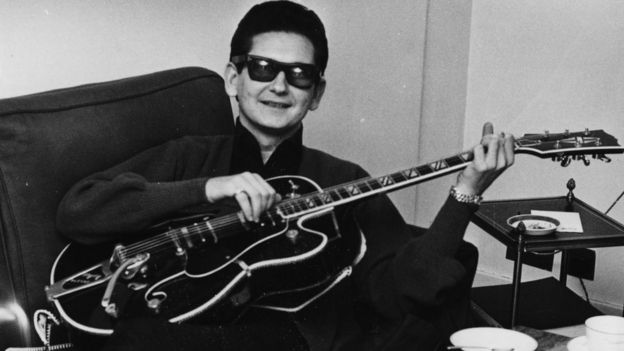 Image copyrightGETTY IMAGES
Image copyrightGETTY IMAGESHis son, Roy Orbison Jr, who hopes his dad’s avatar will one day have a Las Vegas residency, says: “We’re really excited we got the opportunity to do this: the first big tour of a deceased artist with a hologram. “I don’t think it’s possible yet for the hologram to walk out into the audience so there’s definitely a lot of potential for live application.” He adds: “But most importantly this is just the icing on the cake. “The cake is those amazing songs that my dad wrote and his incredible voice.”
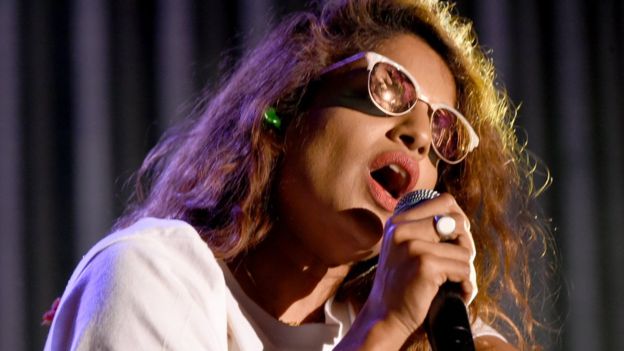 Image copyrightGETTY IMAGES
Image copyrightGETTY IMAGESRapper, activist and actual woman M.I.A believes virtual alter egos can benefit living musicians too. “Artists are at the cusp of embracing AI. But what is political activism in AI phase?” she pondered at Meltdown. “I think ‘Should I make my next video in virtual reality instead of me?’. I find that sexy – new technology.
“I could take the hippy route of singing to people face-to-face… or I could stream my virtual shows to people’s bedrooms around the world so you can be at my show wherever you are.” She went on: “The amount of data AI can pick up on is so fast growing that the future me will be way better anyway! “But will the future me be less politicised?”
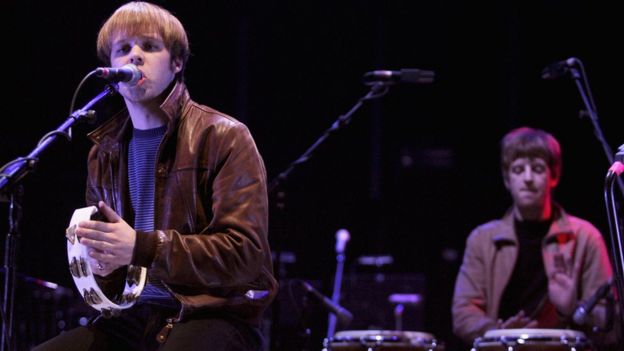 Image copyrightGETTY IMAGES
Image copyrightGETTY IMAGESSpeak to James Skelly of Merseyside psych rockers The Coral and he’ll tell you he would have made the digital changeover years ago. He says: “We wanted a holographic version of The Coral, when we were first doing well in about 2002, to tour Japan as us. “If there was a group that could do another gig, as well as us, and we could split the profits, I’d be up for it! “But you need songs – it’s always about songs.” For all we know, the future may have already started for Guy Garvey of Manchester band Elbow. “How do you know that we are not already holographic?” he quips. Well, quite.
2) The live parameters have shifted
 Image copyrightBLUEDOT FESTIVAL
Image copyrightBLUEDOT FESTIVALFrom the hippies at Woodstock in 1969 to Ed Sheeran and his loop pedal at Glastonbury this summer, the festival experience has been forever changing.By next summer, virtual and augmented reality – as well as “3D mapping” – could mean they are more interactive than ever before.Ben Robinson, creative director of Bluedot Festival at the Jodrell Bank Observatory (you know, the one in Hitchhiker’s Guide), is giddy at the thought of “shifting the parameters”. “We had Orbital playing [in 2017] who, 20 years ago, were the very cutting edge, looking at lasers and light production making it more than just some guy standing on a stage,” he says. “Now today the incorporation of visuals and the production that goes on is quite insane. “3D mapping manipulates the look and feel of a 3D object. It’s been done on castles to make them look like they’ve fallen down. “Now people can experience being on the stage with the artists. Or the gig could move off the stage. “We are a generation spoiled with possibilities.”
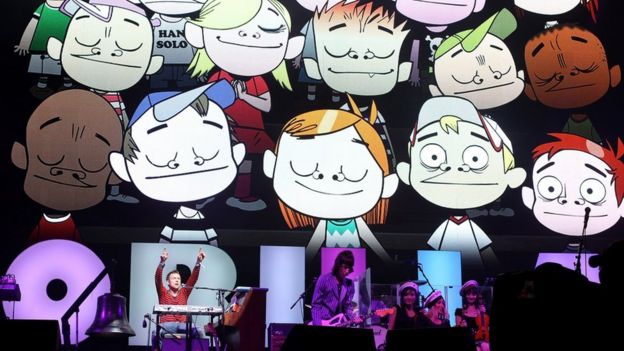 Image copyrightGETTY IMAGES
Image copyrightGETTY IMAGESAnimated heroes Gorillaz hosted their own one-day festival, Demon Dayz, at Margate theme park Dreamland last summer.
Co-creator Jamie Hewlett told the Daily Star that he and Damon Albarn may be getting “too old” but Ben sees no reason why the show can’t go on without them.
“In the past a band’s legacy was they left a record and VHS recording of a concert. Now they can leave the tools for someone else and be just as effective 50 years in the future.”
3) The recording studio is in your laptop
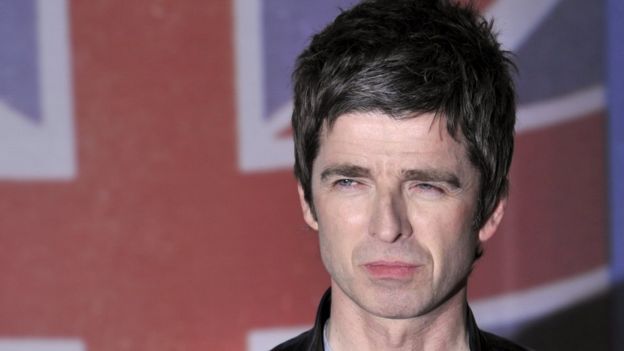 Image copyrightGETTY IMAGES
Image copyrightGETTY IMAGESNoel Gallagher confessed to Radio X’s John Kennedy last month that he had never actually met the bass player on his new album Who Built The Moon?
Jason Falkner was doing his thing down the line from LA, while Noel was having his mind blown in Belfast and London. Noel said: “It was the entire opposite to the thing I’ve ever done. My thing with Oasis was being in a room with a bunch of people and eye contact. “Here I am at two in the afternoon talking to a guy on an iPad and for him it’s four in the morning and I can hear the song coming through his speakers and he’s saying ‘What do you think of this? Maybe if I do that?’ “And I’m like ‘this is so far out it’s unbelievable’.”
Butch Vig, former Nirvana producer and drummer with Garbage and 5 Billions in Diamonds, confirms such technology is also now available to new bands, who are short on cash but long on distance and imagination. “There’s a new editing programme where you can be working on the same song in real time in different cities,” he says. “You have to be creative with the tools you’ve got and, because of the digital technology, everybody can have a really powerful recording studio in your laptop.”
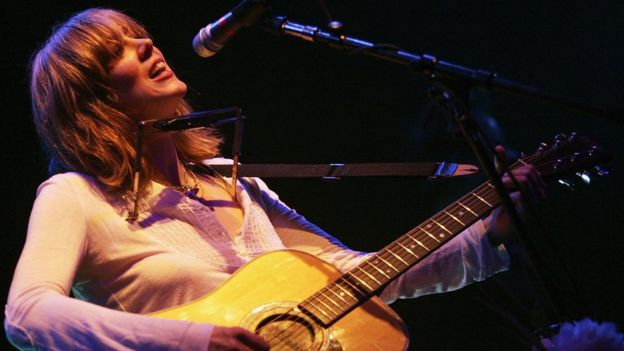 Image copyrightGETTY IMAGES
Image copyrightGETTY IMAGESBeth Orton (who incidentally describes Hatsune Miku as “the music industry’s perfect woman”) embraced such kit on her latest album Kidsticks and in some cases preferred computer-generated sounds over actual instruments.
She says: “The ability to play the keyboard and the sound to be any sound possible was very freeing. That would influence the melodies that you created.”
But just a little of that human touch still goes a long way in the creative process.
“Even making an electronic record it was about the connection with the producer and the other musicians.
“I personally like a bit of imperfection.”
4) There’s a direct line between you and your favourite act
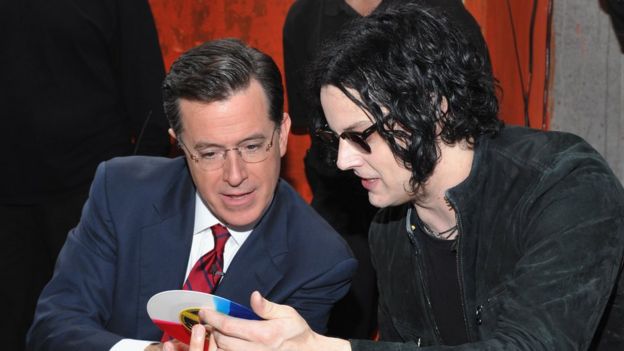 Image copyrightGETTY IMAGES
Image copyrightGETTY IMAGESJack White’s Third Man Records reward their subscribers with deliveries of exclusive limited edition pressings.
DJ Gramatik went a step further last week by becoming the first artist to “tokenise” himself, meaning fans who buy the token using the cryptocurrency Ether can potentially share in his future revenue.
Jeff Smith from music databse Discogs believes such block chain technology will “set a direct line from creator to consumer to be able to send things directly, without any form of piracy”.
He says: “We could see subscription platforms, like Third Man Records, being able to send out Jack White exclusives without them being traded or shared in any way.”
That’s not to say that fans won’t still crave physical records and material from their new crypto-favourites.
“We’re definitely seeing a universal unplugging and physical music becoming a major part of people’s lives again.”
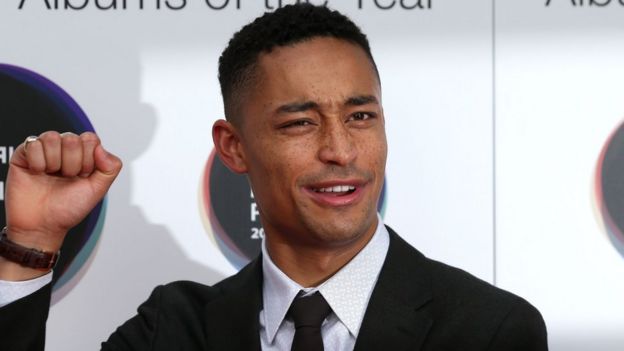 Image copyrightGETTY IMAGES
Image copyrightGETTY IMAGESLondon hip hop star Loyle Carner is not currently available in token form and he’s happy to keep fans waiting for the follow-up to his Mercury-nominated 2017 album Yesterday’s Gone.
“A song comes out and people say ‘I like that – OK now I’m bored of that. Where’s the next one?’,” he explains.
“Singles are like chapters from a book and if you want to hear my music you’ve got to wait for it.”
5) But new music technology is not for everyone
 Image copyrightGETTY IMAGES- Image captionNeil Hannon: People person
Image copyrightGETTY IMAGES- Image captionNeil Hannon: People personFor all the head-bending future technology, for many, music always was and always will be about the people… man.
Neil Hannon from the Divine Comedy says: “I’m going to come across as a complete Luddite now but I believe music only gets worse the further you take people and humanity out of it.
“I foresee if they insist on going down this non-existent route then you’re only going to get another punk of some description that rewrites the rulebook.”
Punks like Irish rockers The Strypes maybe?
Bass player Peter O’Hanlon says: “Our fresh approach will be that we just come and play the gig! Everybody else is flying across the stage and we just stand in front of you and play.”
Guitarist Josh McClorey agrees: “The other stuff is cool, but it’s a gimmick.”
 Image copyrightGETTY IMAGES
Image copyrightGETTY IMAGESCompatriot Lisa Hannigan won’t be found jamming over the internet or appearing live as a hologram anytime soon.
“I don’t think that’s going to be my bag of chips!” says Lisa.
“I just like rocking out a jam with my friends. I can barely work the camera on my phone.
“Cancel the Lisa Hannigan Hologram tour. We’ve lost the cable!”
Just because you can, doesn’t always mean you should and as we hurl ourselves into the new age, fellow folkee Marcus Mumford prefers to hold on to the sacred spirit of the past.
He says: “I don’t know what the future of music is going to look like but if I’m not playing I don’t want no part of it.
“If it sounds good and people are having a good time, then it’s enough for me.”
